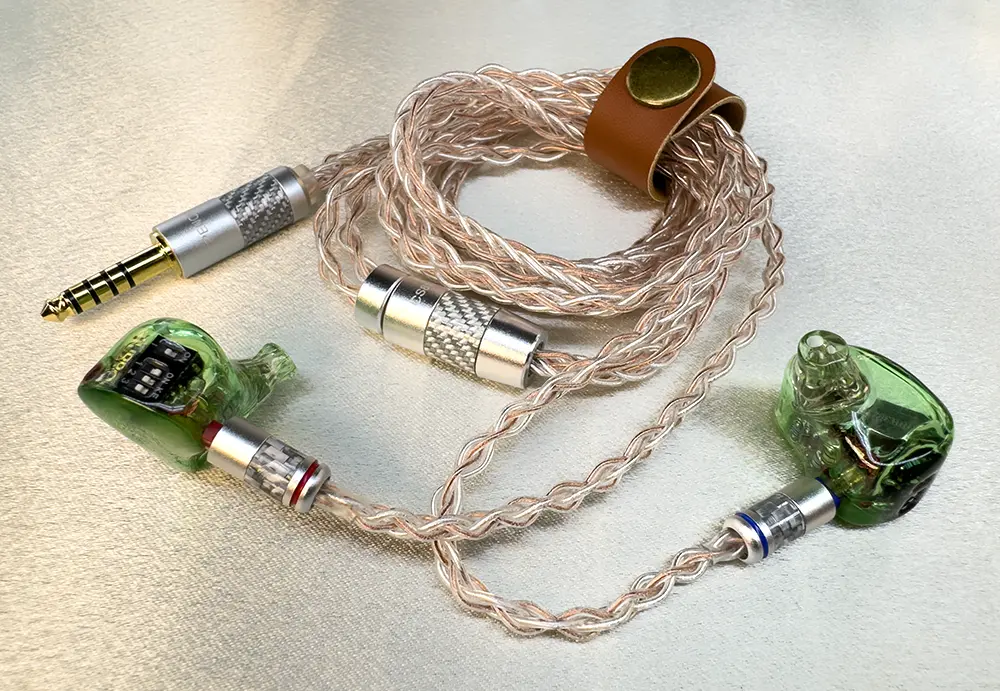Sound Impressions
The Turbos are extremely cohesive, as fast as their name suggests, and pack a wallop.
Bass is heavily emphasised with a slight bias towards midbass, though there’s still plenty of sub bass rumble as well. Bass texture is impressive, if I’m nitpicking it’s a touch mushy compared to bass-focused DD IEMs though still perfectly acceptable – definitely not the kind of bass that jumps out as being produced by BA drivers if I didn’t already know the Turbos’ driver configuration.
There’s absolutely no want for bass quantity either – if anything it may take you awhile to get used to how bass dominant the Turbos are because this is definitely bass that’s a long way north of neutral, so if you listen to a lot of electronic music as I do you definitely won’t find them bass shy.
There’s a satisfying sense of fullness to the Turbos’ midrange, perhaps aided by their midbass output, yet they’re not so warm as to make the soundstage feel constrained or claustrophobic. In fact they do a great job of presenting such a large amount of bass whilst still sounding so clean.

I find their balance between the lower & upper midrange quite satisfying, there was a quite a bit of upper midrange energy right out of the box but that dissipated after a few nights of burn-in. My preference would still be for a touch more lower midrange emphasis, but the extra bit of upper midrange probably aids vocal articulation.
The Turbos feature a fairly dark treble performance which reduces potential fatigue, but you may miss a bit of extra upper treble sparkle. This is an area where the compromise of significantly smaller shells gained by omitting EST drivers will be felt, as I find there’s a certain silkiness ESTs deliver which BAs struggle to replicate. The Turbos feel like they’re delivering virtually all the treble information, but that last little bit of effortless refinement is absent.
Technical Performance

One of the big advantages of omitting a DD is by using BAs exclusively greater technical performance can potentially be achieved.
You probably won’t be surprised then to learn the Turbos are technically very competent, not only compared to other IEMs in their price range, but particularly considering how small they are.
The Turbos’ soundstage width is slightly above average, though despite exhibiting some depth remains shallower than that of expensive IEMs worth thousands of dollars. Imaging is very solid without being truly outstanding, and dynamics are satisfyingly strong.
Resolution is very good, though detail isn’t quite rendered with the same effortlessness one hears when EST drivers are present.
Perhaps most impressively the Turbos possess a tremendous sense of speed despite their huge bass presence, which will be especially appreciated if you listen to fast-paced music with busy passages.
Tuning Switches
The Turbos feature no less than four tuning switches. Three of these boost the bass, midrange & treble respectively whilst the last is a Super Bass Boost switch that does exactly what you’d imagine.
Having this kind of flexibility is especially valuable given the source & cable you pair the Turbos with can alter their presentation significantly, to say nothing of your choice of music affecting your preferences for any given listening session.
I’m a bit of a minimalist however, so though I tested the switches for the purpose of this review it was almost a relief to learn my preferred combination was the configuration they arrived in – Super Bass Boost OFF, bass ON, midrange OFF and treble OFF – best described as “0100”. (seen in photo above)
Though I also like the Turbos with all switches OFF, I find they lack that little bit of warmth & fullness without bass set to ON. Treble ON might work if my source were darker or warmer, and Super Bass Boost though fun to take for a spin was a little boomy, adding too much midbass for my taste – but if you find the rest of your system or choice of music anaemic… it’s nice knowing the option’s there.
Page 1 – Introduction, Packaging & Ergonomics
Page 2 – Sound Impressions, Technical Performance & Tuning Switches
Page 3 – IEM Comparisons
Page 4 – More IEM Comparisons
Page 5 – Amplfication Performance & Cable Comparisons
Page 6 – Conclusion




Comments